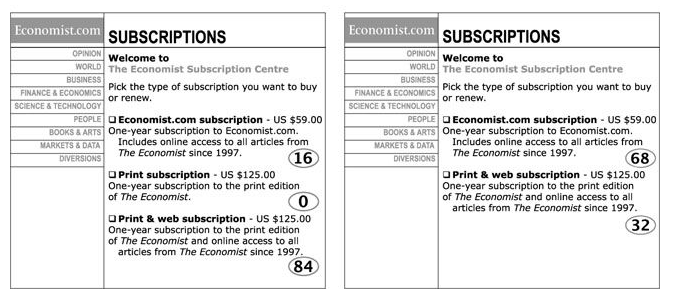 One of the best books that I’ve read in a while is Predictably Irrational by Dan Ariely. The premise is that while we don’t behave the way that economists would expect us to if we were simply profit-maximizing robots, we are still predictable in our irrational behavior. The book is filled with stories of the experiments that he’s run to prove this premise. As a marketer, there were a few key take-aways for me, but in this blog post I’m just focusing on the pricing one!
One of the best books that I’ve read in a while is Predictably Irrational by Dan Ariely. The premise is that while we don’t behave the way that economists would expect us to if we were simply profit-maximizing robots, we are still predictable in our irrational behavior. The book is filled with stories of the experiments that he’s run to prove this premise. As a marketer, there were a few key take-aways for me, but in this blog post I’m just focusing on the pricing one!
1. When you provide price information always provide other price information. Price is always taken in context (even if that context isn’t related to the price.) It’s up to us as marketers to provide a rationale that easily allows our clients to choose what we want to sell. My favorite example of this from the book was The Economist magazine pricing example. One group of smart students from MIT saw the offers on the table on the left and another group saw the offers on the table on the right.

So, when the print ONLY subscription is available, buyers shift dramatically (84%) to the Print & Web combination. When the print ONLY option is not available, buyers shift dramatically to the web only option (68%). WOW! That’s 80% more revenue when they offer the ‘decoy’ that nobody bought. (From $8,012 with just the two options to $14,644 with the third option added).
What do you really want to sell and how can you offer it in a way that it is the obvious option for your customers?
